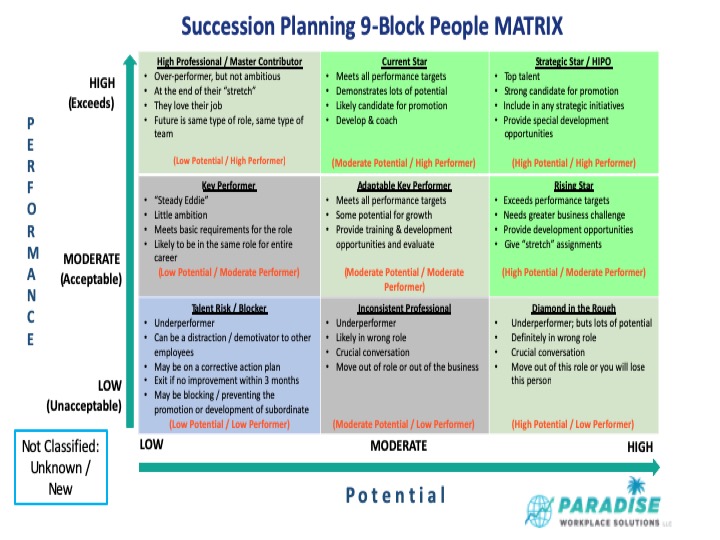Succession Planning is a critical part to any business’s People Plan to assure that the right person is in the right job at the right time for the right reason especially when something unexpected happens and there is a gap for a critical role.
Succession planning pays off for Apple
When Steve Jobs, former CEO at Apple, was diagnosed with pancreatic cancer in 2004 and had surgery to remove the tumor, he was hoping that he would “still be around for a few more decades”. Unfortunately, that was not the case. Steve Jobs thought ahead and embraced Tim Cook, Apple’s COO, and began grooming him to be his successor. When Jobs’ health deteriorated and he succumbed to the perils of the disease, Cook was favorably positioned and prepared to take on the CEO role.
In this situation, Jobs had the element of time on his side as it related to being able to develop his successor. Unfortunately, many companies, without a well defined succession planning process in place, find themselves in disarray when one of its critical people can no longer perform their duties because of an unexpected and acute situation.
Evaluating your people for potential
The succession planning process looks at a company’s current workforce and develops a talent pool of candidates for critical or important positions within the organization.
To ensure a company’s survival and continuity the first step is to identify the critical people and positions that could put the company in jeopardy. Once you have that list, you will be ready to start looking at your current situation.
The succession planning process consists of three components; the 9-Block People Matrix, the Succession Planning or Future State Business Model, and the Individual Succession Plan Profile. In this blog, we will be using the Succession Planning 9-Block People Matrix.
The Succession Planning 9-Block People Matrix
I have found the 9-Block People Matrix the fairest, consistent tool to use when evaluating individuals for future roles. The Matrix is used to plot an employee’s present-day performance with that same employee’s potential. As the name suggests, there are nine boxes contained in the Matrix (Figure 1).

The process normally starts at the top with the senior leadership organization chart and cascades down as necessary. Typically, the senior leader in a functional area would be responsible for the succession chart of his/her function. He/she should identify people in the organization who could potentially fill each critical role. Each person should be assessed individually using the performance and potential descriptors in each box and placed in one of the boxes. You may find it important to add some criteria specific to your business or the critical role.
Calibrate your leadership team’s evaluations
Like most things related to people any assessment can be subjective and based on an evaluator’s definition of performance and potential. I always recommend a calibration meeting with departmental or company management team members be conducted following any evaluation. The calibration is a good opportunity to get additional input or have the evaluation verified. It’s also an opportunity for other managers to better understand the potential of employees they may/may not know.
You will likely find that there will be people (usually hired less than 12 months ago) that are too new to evaluate rigorously. These individuals should remain on the radar for future discussions and placed in the “Not Classified” box.
As the business is in a constant state of change, so are its people with promotions, retirement and exits from the organization. To keep on top of the changes the Succession planning process should occur twice a year. The first round is best done in early June (before individual vacations are taken and before any requirements for closing 2nd quarter financial books), and then again in either late November or early December. During this second meeting, it’s important to discuss individual development plans and gain alignment on performance before year-end reviews are completed.
Facilitators can challenge bias and further discussions
Finally, all discussions regarding succession planning should be facilitated by a bias-neutral individual in order to see alternate sides of situations or opportunities. It is for this reason that many companies engage the assistance of an outside facilitator to conduct and manage these meetings.
The other two components used in the Succession Planning process—the Succession Planning Business Model and the Individual Succession Plan Profile will be highlighted in the next couple of Blogs.
Contact me if you have questions or would like to receive a full-size copy of the 9-Block Matrix.
Paradise Workplace Solutions, LLC works with business owners to improve productivity and profitable growth by aligning people strategies to the company’s business plan.


